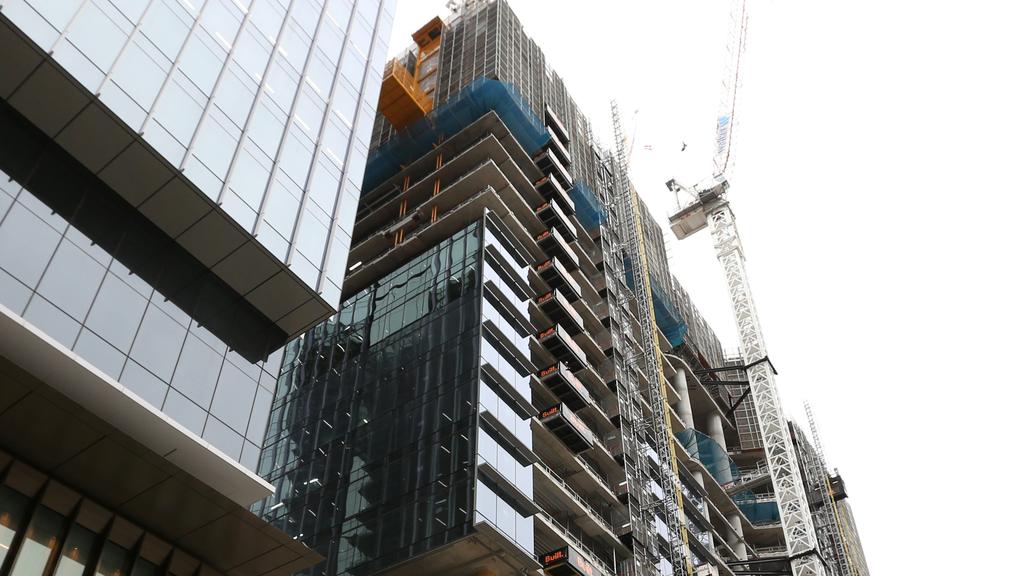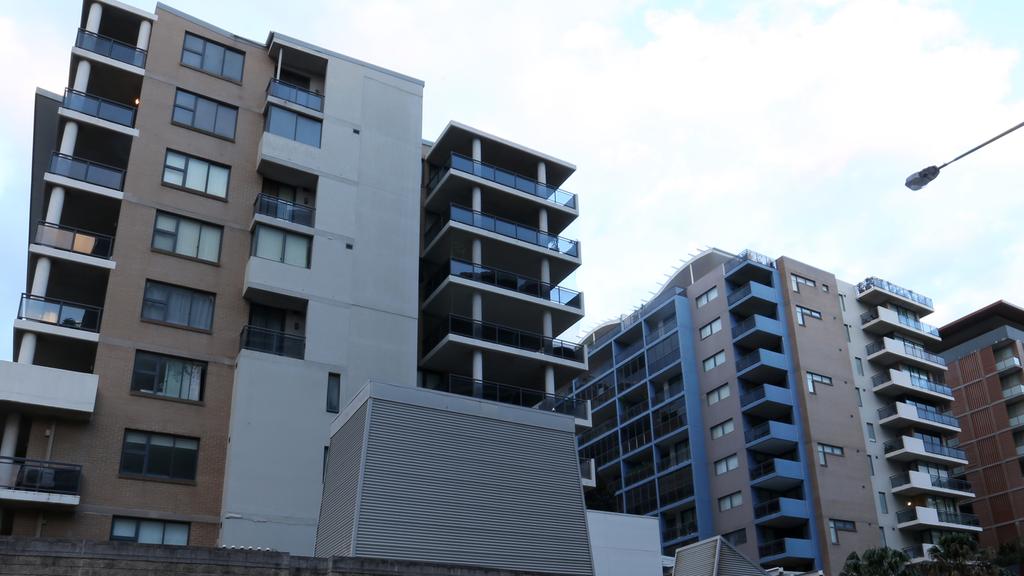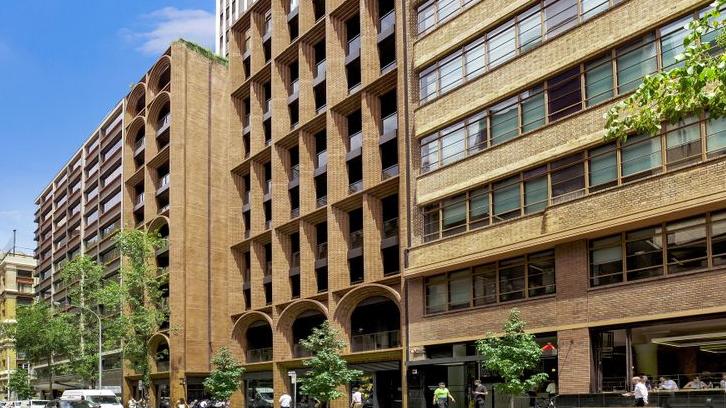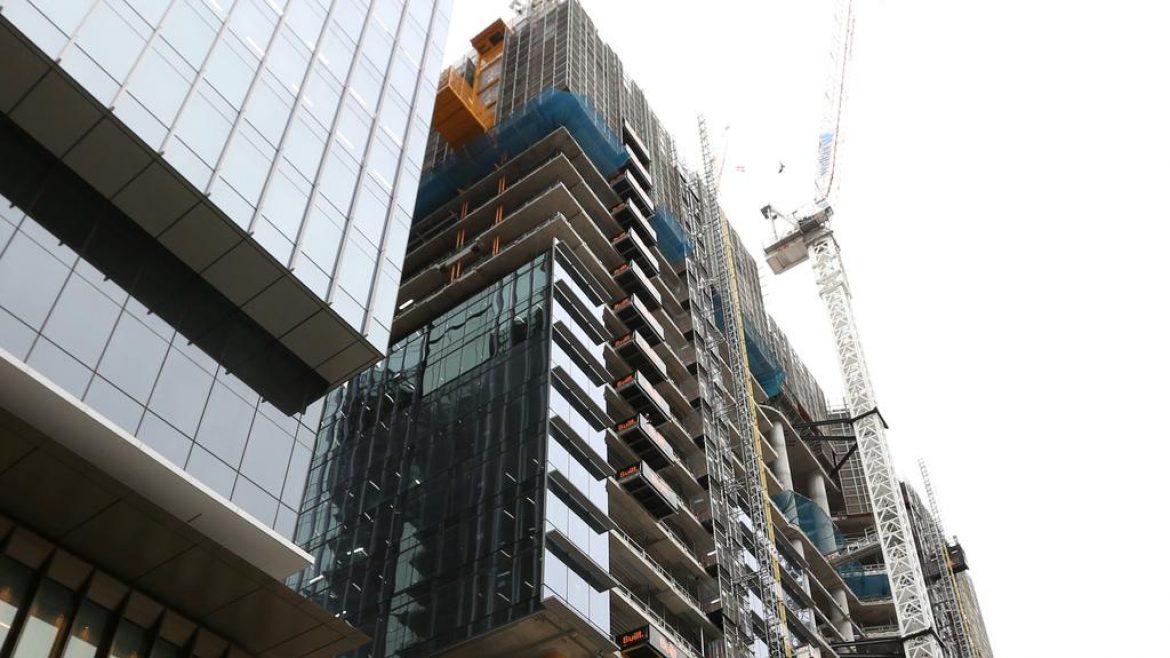
Construction in Parramatta, one of the suburbs with the biggest unit supply. Picture: John Fotiadis
Parramatta, Mascot and Rouse Hill in the northwest have topped a list of Sydney suburbs “oversupplied” with apartments.
These suburbs each have more than 1500 units in the pipeline over the next two years, which will increase the current supply of apartments by 13 per cent or more.
A similar situation was unfolding in Gosford on the Central Coast, where close to 1900 units were set to be built, which would increase unit supply by 73 per cent.
MORE: Cleanest and dirtiest homes revealed
Sydney’s most popular suburbs to buy a home
The oversupply in these areas has raised the risk of dangerous price reductions for buyers of units sold off the plan, according to RiskWise research.
RiskWise chief executive Doron Peleg said there was already a high degree of risk associated with off the plan units but they have been exacerbated during the COVID-19 pandemic.
One of the biggest risks is that the glut of new apartment projects in some areas will be coinciding with reduced buyer demand – particularly from investors, he said.
Investor activity was already low before the pandemic because of tighter lending restrictions but falling rents and rising vacancies have created a further disincentive for new investors to purchase units.
Unit rents dropped by about 2 per cent in Sydney and Melbourne over the past three months, CoreLogic data showed.
High-profile reports of cladding issues and defects also damaged the reputation of the off the plan sector, encouraging more investors to seek out house-and-land packages instead, Mr Peleg added.
Investors who were still buying rental apartments unsuitable for families were taking an enormous gamble, with both equity and cash flow risk expected to materially increase, he said.
Buyer advocacy group Buyers Buyers’ co-founder Pete Wargent said buying into oversupplied areas amid international border closures would compound these risks.

Mascot Towers in Mascot, where cracks were discovered in the building last year.
He explained this was because international students and tourists formed a large proportion of the traditional tenant base in many of these locations.
Buyers were better off considering more supply-constrained markets where properties offered “scarcity value”, Mr Wargent said.
“Over the medium to longer term, it’s the land value component of the asset that does the heavy lifting for you and, therefore, buyers should look for a high land-to-asset ratio,” he said.
“The unit oversupply issue has been with us for some years now and outperformance has mainly been in family appropriate dwelling types in markets where demand is consistent and new supply has been restricted.”
Buyer’s agent and CEO of propertybuyer.com.au Rich Harvey said buying new apartments in outer suburban areas like Rouse Hill made no sense.

A one-bedroom unit in this building on Clarence St in Sydney was recently listed for $960,000 after first going to market at $1.05m.
“While it may be nice to have a shiny new kitchen and bathroom, there is a significant downside price risk as the supply of land for further development is plentiful,” Mr Harvey said.
“In a market where prices are declining, there is a settlement risk for the buyer if they discover that the value paid for the unit has declined significantly.”
As an example, Mr Harvey said someone who bought a unit for $650,000 but discovered it was only worth $585,000 when it came time to settle the property would have to stump up the difference – in this instance: $65,000.
“This could be a serious problem for some cash-strapped buyers,” he said.
The post Sydney suburbs where apartment oversupply is becoming a major issue for buyers appeared first on realestate.com.au.

